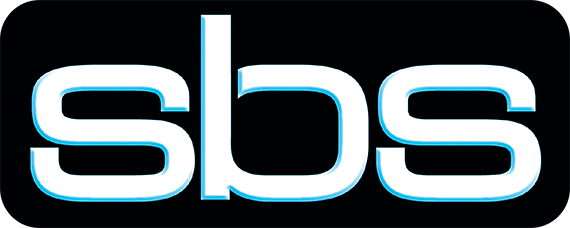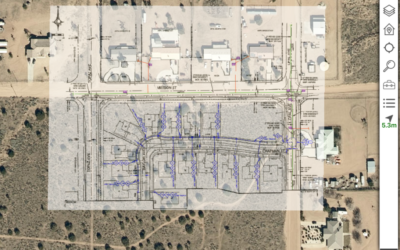Utilities can optimize construction and asset management using standardized designs and robust modeling
Modernization doesn’t have to be difficult
Utilities worldwide are working overtime to build safe, efficient, and reliable infrastructure. Why? 70% of today’s grid infrastructure is at least 25 years old. Energy prices continue to soar. Inflation is rising. Grid reliability and resiliency are an ever-present concern—especially with extreme weather events like hurricanes, floods, and wildfires. Add the increased prioritization of a net-zero carbon footprint and a focus on renewable energy, and you have more than enough impetus to improve yesterday’s utility networks. And with that network modernization comes the need for leveraging IT modernization to help.
The challenge then becomes how to deploy enterprise IT quickly and efficiently. Utility engineers, planners, and designers manually switch between multiple applications, including CAD, modern geospatial, enterprise asset management, and work order management. As a result, they find themselves overburdened with numerous, often complex systems. Utilities need a modern systems approach for infrastructure and network design that leverages automated functions and intuitive digital tools.
New demands drive new technology
With the increased need for grid and network modernization comes more construction, asset management, and maintenance. Previously, companies could rely on traditional IT operations and design. The 1980s and 1990s saw companies operate with department-specific software that worked independently. Today, more organizations are adopting modern application program interfaces (API) to connect design, geographic information systems (GIS), and operations. They want a more holistic approach as they implement or upgrade systems.

As companies modernize, GIS has become central to their overall IT strategy. Solutions like Esri’s ArcGIS Utility Network (UN) represent a shift from departmental GIS to an enterprise solution. As a result, many utilities are transitioning from legacy software to Esri’s modern geospatial platform. This shift can streamline backend workflows, including building better designs and updating system data using efficient integrations. An enterprise architecture based on Esri’s UN enables organizations to incorporate integrated standards. As new designs, construction, and maintenance begin, they consistently reduce redundancy.
And despite the digital world impacting our daily lives, manual processes still carry the day for many utilities. How? Field crews bring paper maps and hard-copy bill of materials to the field for construction projects. They carry out hand-drawn redlining to capture updates and additions. When they return to the office, they hand the paper records to a separate department that manually re-enters data into as many applications as needed, from ADMS to GIS, EAM, and dispatch. Many utilities have layers of workarounds built into their processes due to the data quality issues that arise from such an inefficient process.
Utilities need a digitally transformed, spatially aware enterprise where applications like EAM, GIS, and design work harmoniously to consolidate at scale. By bridging the gap between automated design and location-based technology, organizations improve networks, lower prices, and provide better service.
Utility design challenges:
- Labor-intensive engineering, design, and mapping
- Disparate GIS, CAD, and asset management
- Antiquated, incomplete, and inaccurate data
- Workflow redundancy, inefficiency, and lack of standards
- Lack of integrated communication and transparency
Integrated design and GIS
Modern IT systems, built with integrated design and GIS, can enable engineering, operations, and GIS departments to work together using connected systems that improve infrastructure planning, analysis, and data capture. Utility employees replace manual and paper-based methods with robust digital design solutions to work smarter, faster, and more accurately. Ultimately, forward-thinking utilities can use innovative solutions to build safer, more resilient, and more sustainable networks.
The key to building a modern IT enterprise for utilities is configurable integration. Companies streamline workflows by connecting geospatial functions with model-based design, asset management, and work order management. Electric, gas, and water utilities and telecommunications companies automate and enhance multiple processes by leveraging location-based data and tools. They implement a single enterprise solution to generate robust models, order materials, perform cost analysis, and share results.

These organizations develop consistent and coordinated workflows using a model-based, rules-driven approach. They accurately edit and manipulate assets and related attributes. Designers generate plans and sketches using proper construction standards. Combined with geospatial technology, departments replace manual redrafting and remapping with automated steps and application interoperability. They can easily attach digital work orders to digital drawing files and associated information, while a bill of materials can be edited as the design changes. Once new projects are designed and as-built, they are transitioned into GIS production, meaning additional departments gain the latest information.
Organizations improve functions like asset management and safety to build better and manage networks that consider multiple issues such as vegetation management and wildfire. They can deliver and manage distributed energy resources, including two-way power sources, like solar panels that feed back to the grid and the dwelling where they are attached.
With modern GIS connected to intelligent design, engineers can precisely determine and model connected assets leveraging data maintained in GIS as part of the planning, design, and construction processes seamlessly.
Using simple yet powerful mobile apps, you can use digital maps, integrated project files, and rich CAD models to clearly and accurately represent a job to field crews. Crews can go into the field to perform construction using digital designs, data entry, and editing tools on their tablets.
Rather than mark up multiple pieces of paper that will have to be digitized and individually input into several applications, design changes can be made on the fly and automatically updated into various applications without additional steps. These automated methods can cut data entry backlogs from over six months to less than a week.
Integrated, automated design and GIS supplies:
- Robust design and engineering capabilities
- Standardized safety and compliance processes
- Enterprise GIS, EAM, and CAD cohesion
- Field operations digital tool and data editing
- Improved risk management and reporting
Trusted partners with a track record of success
 Utility businesses can transform their operations by combining GIS, EAM, CAD, and more into an integrated enterprise solution that transforms workflows. The key is knowing where to start and how to replace legacy software, applications, and code with an enterprise solution. Luckily, Locana and SBS have years of experience working with clients to deliver a fully integrated geospatial and design system.
Utility businesses can transform their operations by combining GIS, EAM, CAD, and more into an integrated enterprise solution that transforms workflows. The key is knowing where to start and how to replace legacy software, applications, and code with an enterprise solution. Luckily, Locana and SBS have years of experience working with clients to deliver a fully integrated geospatial and design system.
Working to ensure IT project success using a customer-first approach, Locana and SBS’ best-in-breed solutions and services can be tailored to your precise needs. SBS supplies proven, practical solutions for designing the world’s critical infrastructure and working closely with Locana; the companies provide expanded services that include the most modern geospatial technologies available today.
The two companies work collaboratively with utilities, using their combined industry and technology experience and expertise to fully understand requirements before custom-developing the right solution. The goal is to make organizations fully self-sufficient and operate independently without returning to the project delivery teams for further consulting.
With proper configurations and test-as-you-go quality assurance, both companies operate as a trusted resource that includes adoption and change management best practices, ensuring a long, successful track record for client implementations.
Improve your workflows today
Today’s utility businesses need an integrated solution to handle increased expectations as they modernize their infrastructure. With a trusted partner like Locana and SBS, companies can quickly implement solutions that combine GIS, EAM, CAD, and more. They can automate and streamline numerous processes across departments, replacing manual and paper-based methods with robust digital design solutions. The result is building a safer, more resilient network that operates at lower costs and with greater efficiency.
***
Want to learn more about the value of integrating GIS and EAM, including SBS and Locana solutions and services? Read the datasheet.


